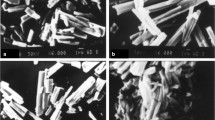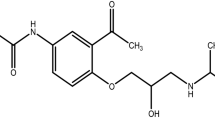No Heading
Purpose.
Deliquescence is a first-order phase transformation from solid to solution and occurs at a specific relative humidity (RH) that is characteristic to the solid. The goal of this research was to investigate the reduction in critical relative humidity (RH0) in binary solid mixtures of deliquescent active pharmaceutical ingredients (APIs) and deliquescent excipients.
Methods.
The RH where deliquescence is induced, RH0, was measured using a gravimetric water vapor sorption balance. Values were obtained for model deliquescent APIs and excipients as well as for their binary mixtures. Model APIs included ranitidine HCl and diphenhydramine HCl, and sucrose and sodium chloride were examples of excipients investigated. To probe the thermodynamics of this phenomenon, water activity (aw) of various saturated solutions of API and excipient systems was measured using a water activity meter. Optical microscopy was used to observe visually the phenomenon under investigation. The Ross equation was used to estimate RH0mix, and predicted values were compared with experimental results.
Results.
There was close agreement between RH0 measurements (single-component RH0, and RH0mix) and aw measurements of the corresponding saturated solutions. In addition, RH0mix values were always lower than RH0 for the API and excipients alone. In general, experimentally observed RH0mix values were higher than those predicted using the Ross equation.
Conclusions.
Mixtures of deliquescent API and deliquescent excipient are more hygroscopic (i.e., have lower RH0) than either the API or the excipient alone. This might have significant effects on API and drug product stability.
Similar content being viewed by others
References
1. G. Zografi. States of water associated with solids. Drug Dev. Ind. Pharm. 14:1905–1926 (1988).
2. C. Ahlneck and G. Zografi. The molecular-basis of moisture effects on the physical and chemical-stability of drugs in the solid-state. Int. J. Pharm. 62:87–95 (1990).
3. G. Zografi and B. Hancock. Water-solid interactions in pharmaceutical systems. In T. Nagai (ed.), Topics in Pharmaceutical Sciences 1993, Proceedings of International Congress on Pharmaceutical Sciences f.I.P., Medpharm Scientific, Stuttgart, Germany 1994, pp. 405–419.
4. P. A. Thiel and T. E. Madey. The interaction of water with solid surfaces: fundamental aspects. Surf. Sci. Rep. 7:211–385 (1987).
5. L. Van Campen, G. L. Amidon, and G. Zografi. Moisture sorption kinetics for water-soluble substances. III: theoretical and experimental studies in air. J. Pharm. Sci. 72:1394–1398 (1983).
6. L. Van Campen, G. L. Amidon, and G. Zografi. Moisture sorption kinetics for water-soluble substances. II: Experimental verification of heat transport control. J. Pharm. Sci. 72:1388–1393 (1983).
7. L. Van Campen, G. L. Amidon, and G. Zografi. Moisture sorption kinetics for water-soluble substances. I: Theoretical considerations of heat transport control. J. Pharm. Sci. 72:1381–1388 (1983).
8. R. Yamamoto and T. Takahashi. Studies on the hygroscopicity and moisture barriers of medicines. Ann. Repts. Shionogi Res. Lab. 1:142–147 (1952).
9. J. R. Adams and A. Merz. Hygroscopicity of fertilizer materials and mixtures. Ind. Eng. Chem. 21:305–307 (1929).
10. M. J. Kontny and G. Zografi. Moisture sorption kinetics for water soluble substances. Part iv. Studies with mixtures of solids. J. Pharm. Sci. 74:124–127 (1985).
11. W. Cantrell, C. McCrory, and G. E. Ewing. Nucleated deliquescence of salt. J. Chem. Phys. 116:2116–2120 (2002).
12. A. D. McNaught and A. Wilkinson. Compendium of Chemical Terminology, Blackwell Science, Cambridge, UK, 1997.
13. M. J. Kontny and G. Zografi. Sorption of water by solids. In H. G. Brittain (ed.), Physical Characterization of Pharmaceutical Solids, Marcel Dekker, New York, 1995, pp. 387–418.
14. A. S. Wexler and J. H. Seinfeld. Second-generation inorganic aerosol model. Atmospheric Environment Part A-General Topics 25:2731–2748 (1991).
15. Z. Z. Ge, A. S. Wexler, and M. V. Johnston. Multicomponent aerosol crystallization. J. Colloid Interface Sci. 183:68–77 (1996).
16. A. N. Kirgintsev and L. N. Trushnikova. Isopiestic method of determining the composition of solid phases in three-component systems. Russ. J. Inorg. Chem. 13:600–601 (1968).
17. I. N. Tang. Aerosol growth studies - IV. Phase transformation of mixed salt aerosol in a moist atmosphere. J. Aerosol Sci. 9:505–511 (1978).
18. K. D. Ross. Estimation of water activity in intermediate moisture foods. Food Technol. 29:26–34 (1975).
19. K. Uzunarslan, and J. Akbuga. Moisture adsorption and effect of adsorbed water on the powder and compaction properties of ranitidine hydrochloride. Pharmazie 46:273–275 (1991).
20. R. Teraoka, M. Otsuka, and Y. Matsuda. Effects of temperature and relative-humidity on the solid-state chemical-stability of ranitidine hydrochloride. J. Pharm. Sci. 82:601–604 (1993).
21. T. Yamamoto. Absorption and degradation of powdered drug (in Japanese) Yakuzaigaku 23:197–199 (1963).
22. K. Danjo, H. Kato, A. Otsuka, and T. Wakimoto. Influence of moisture adsorption on volume shrinkage and diametral tensile strength of sucrose tablets. Chem. Pharm. Bull. (Tokyo) 41:2147– 2150 (1993).
23. M. Otsuka and Y. Matsuda. The effect of humidity on hydration kinetics of mixtures of nitrofurantoin anhydride and diluents. Chem. Pharm. Bull. (Tokyo) 42:156–159 (1994).
Author information
Authors and Affiliations
Corresponding author
Rights and permissions
About this article
Cite this article
Salameh, A., Taylor, L. Deliquescence in Binary Mixtures. Pharm Res 22, 318–324 (2005). https://doi.org/10.1007/s11095-005-1563-5
Received:
Accepted:
Published:
Issue Date:
DOI: https://doi.org/10.1007/s11095-005-1563-5




